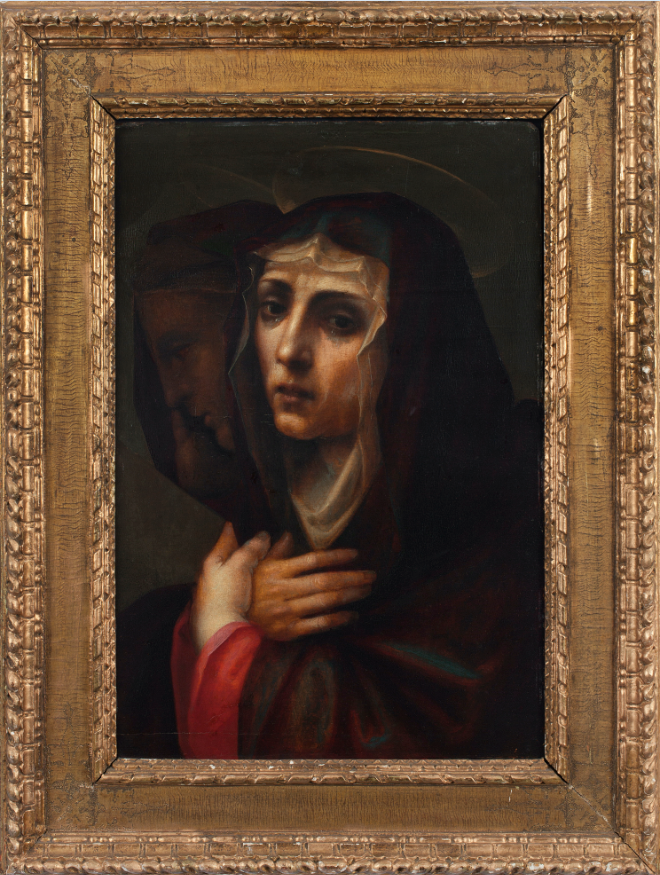Robert Simon Fine Art specializes in European works of the Renaissance and Baroque periods. It’s our pleasure to share with you the following exclusive interview with Robert Simon in this Art Gallery Spotlight.
The new Robert Simon Fine Art online catalogue and exhibition is titled “New, Old, and Unexpected” and includes paintings, drawings, and sculpture from the 16th to the 20th centuries. The images featured in this interview are included in the show.
Cherie Dawn Haas: Please tell us about your gallery and the type of art in which you specialize.
Robert Simon: Robert Simon Fine Art is dedicated to introducing the great art of the past to new audiences and to exploring the continuum between that art and contemporary artists who follow in that tradition. The gallery was born out of my expertise in Italian painting, although my interests have since expanded to include the breadth of European painting and sculpture from the Renaissance to the Nineteenth Century. As broad as these interests are, connoisseurship underlies them all and has resulted in a remarkable series of discoveries of major pictures by artists as diverse as Pintoricchio, Dante Gabriel Rossetti, Vittore Carpaccio, Parmigianino, Guido Reni, Salvator Rosa, Paolo Uccello, and, notably, Leonardo da Vinci’s “Salvator Mundi.” Additionally, the gallery has led collector interest in the fields of female Old Master painters and Spanish Colonial art, having brought to light and placed important works in both areas.
Gallery exhibitions have focused on pairing contemporary paintings and sculpture with analogous works from the Renaissance, the Baroque era, and Nineteenth Century. Significant paintings, drawings, and sculpture from the gallery are to be found in major American museums, as well as in private collections across the globe.

What adjustments have you made as a gallery since the COVID-19 outbreak?
We are working remotely, but have been able to prepare the first of a series of new online catalogues of Old Masters and works in the classical tradition. The aim here is not only to widen our audience and show some unfamiliar works of art, but also to demonstrate just how accessible such works are. The works in the catalogue, which is aimed at new and established collectors alike, are priced between $4,000 and $50,000. And since the ability to examine an item in our gallery is at present difficult, if not impossible, we are including the cost of domestic shipping in the prices that we have given for each.
What’s your biggest priority at this time? Over the next year?
1) Planning for exhibitions, whether in the gallery or online.
2) Staying in touch with collectors and museum colleagues.
3) Drinking all the wine we would normally serve at openings.

What advice do you have for collectors as they navigate these times, and beyond?
While museums are closed, this is a wonderful time to expand and deepen one’s knowledge of the art of the past—through books, online resources, and contact with dealers who handle works of personal interest. Being an informed collector allows one to make better decisions about what to buy—and opportunities are forever appearing. At the same time, as we spend more time at home, it is never more important to buy only things that we will enjoy and that will sustain us over time.
Anything else you’d like to add about the current issues galleries are navigating?
Most galleries are expanding their use of virtual and video exhibitions on their websites and across digital platforms. There is a real danger of overload as every other entity—commercial, educational, governmental—seems to be doing the same thing. It is important that galleries should be judicious in what they present else it becomes lost amid all the noise.

What are some of the ways you find artists to represent?
I seek out artists with a real affinity for the art of the past—ones that are more than technically accomplished; those who understand the emotional, spiritual, or intellectual components that have nourished and challenged people for centuries.
Anything else you’d like to add?
Governmental agencies do not count art as “essential.” We believe it is—both for those who make it and those who look at it. It is one of the fundamental modes of communication that humans have developed and one that many of us cannot live without. Stay with it, in whatever way you can!





To learn more about Robert Simon Fine Art and the “New, Old, and Unexpected” exhibition, please visit robertsimon.com.









Art is essential. It is how some of us live. Think. Desire. Do. We need to be able to look at it to live. Move. Think. This is a good article. And as an art curator in a gallery, this is useful to us. And people who love art.